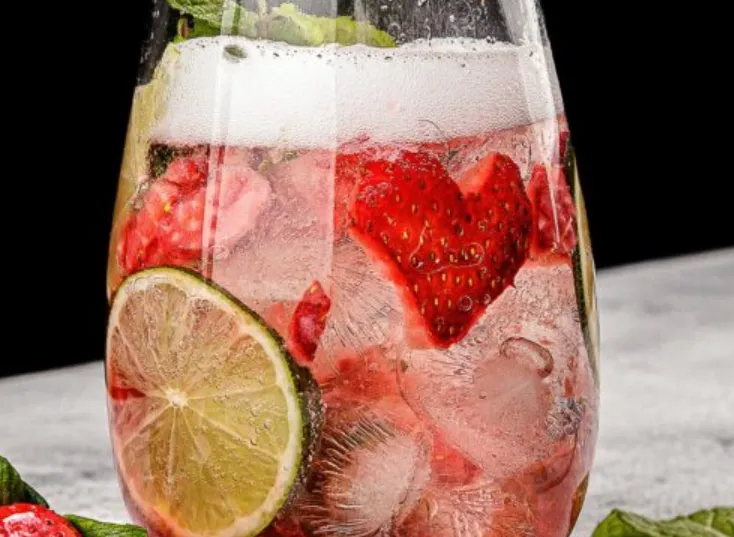Introduction
Mocktails, the non-alcoholic counterparts of cocktails, have become increasingly popular for their versatility and inclusivity. Whether you’re hosting a party, a family gathering, or just want to enjoy a refreshing drink without alcohol, mocktails offer endless possibilities. One of the key elements in creating visually appealing and exciting mocktails is the use of food colors. This blog delves into the role of food colors in mocktails, the types available, and how to use them to craft stunning beverages.
The Importance of Food Colors in Mocktails
Food colors serve several essential purposes in the art of mixology, particularly for mocktails:
1.Visual Appeal: Bright and vibrant colors make mocktails visually appealing and enticing. A visually attractive drink enhances the overall experience and makes the occasion feel special.
- Theme Coordination: Food colors can help match mocktails to the theme of an event, whether it’s a festive holiday, a summer party, or a themed gathering.
3.Creativity and Fun: Experimenting with different colors allows for creative and fun presentations, making mocktail creation an enjoyable activity.
Types of Food Colors for Mocktails
Food colors for mocktails can be categorized into natural and synthetic types, each with its own set of characteristics.
Natural Food Colors
Natural food colors are derived from plant, animal, or mineral sources and are favored for their health benefits and natural appeal.
- Beet Juice Powder: Provides a vibrant red hue, perfect for creating strawberry or cherry-flavored mocktails.
- Spirulina: Offers a striking blue-green color, ideal for tropical or ocean-themed drinks.
- Turmeric: Gives a bright yellow color, great for citrus-based mocktails.
4. Red Cabbage Extract: When mixed with different pH levels, it can create a range of colors from pink to blue.
5. Carrot Juice: Adds an orange hue, perfect for sunrise-themed drinks or carrot-based mocktails.
Synthetic Food Colors
Synthetic food colors are man-made and offer a broader spectrum of hues with consistent and vibrant results.
- Red 40 (Allura Red): A popular choice for its bright red color, often used in fruit punch or berry-flavored mocktails.
- Blue 1 (Brilliant Blue): Provides a vivid blue shade, ideal for blue lagoons or galaxy-themed drinks.
3.Yellow 5 (Tartrazine): Gives a sunny yellow color, perfect for lemonade or tropical mango mocktails.
- Green 3 (Fast Green):A bright green color used in mint or kiwi-flavored drinks.
- Purple (Red 40 and Blue 1 Mix): A mix of red and blue dyes to create a beautiful purple hue, ideal for grape or lavender mocktails.
How to Use Food Colors in Mocktails
Incorporating food colors into mocktails requires a balance of creativity and precision. Here are some tips for using food colors effectively:
- Start Small: Begin with a small amount of food color and gradually add more until the desired shade is achieved. This helps prevent overly intense colors.
- Mix Thoroughly: Ensure the food color is evenly mixed to avoid streaks and patches, which can affect the drink’s appearance.
- Layering: For a sophisticated look, layer different colored liquids. Use a spoon to pour the liquid slowly over the back of the spoon to create distinct layers.
- Color Combinations: Experiment with different color combinations to create unique shades. For instance, mixing blue and yellow can create a vibrant green.
- Natural Extracts: When using natural food colors, consider the flavor they might add to the drink. For example, beet juice powder not only adds color but also a subtle earthy sweetness.
Popular Mocktail Recipes Using Food Colors
Here are some popular mocktail recipes that showcase the effective use of food colors:
1. Rainbow Mocktail:
– Ingredients: Lemonade, cranberry juice, blue curaçao syrup, orange juice.
– Method: Layer the ingredients carefully to create a stunning rainbow effect.
-
Blue Lagoon:
– Ingredients: Lemonade, blue curaçao syrup, soda water.
– Method: Mix lemonade with blue curaçao syrup and top with soda water for a refreshing blue drink.
-
Sunrise Mocktail:
– Ingredients: Orange juice, grenadine, club soda.
– Method: Pour orange juice into a glass, add club soda, and slowly pour grenadine to create a sunrise effect.
-
Green Mint Mojito:
– Ingredients: Lime juice, mint leaves, simple syrup, green food color, soda water.
– Method: Muddle mint leaves with lime juice and simple syrup, add green food color, and top with soda water.
Conclusion
Food colors play a crucial role in enhancing the appeal and creativity of mocktails. Whether you prefer natural extracts for their health benefits or synthetic colors for their vibrancy, there are endless possibilities to explore. By incorporating food colors, you can transform simple mocktails into visually stunning and memorable beverages that are sure to impress at any event. Experiment with different colors, layer your drinks, and let your creativity shine through in every glass.
